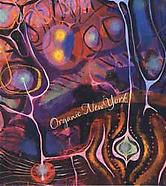“It is the mysterious that I love in my painting. It is the stillness and the silence. I want my picture to take effect very slowly, to obsess and to haunt." (i)
Born in Pittsburgh, William Baziotes grew up in the Greek community of Reading, Pennsylvania. In 1931, he began working for the Case Glass Company—antiquing glass and running errands—while taking evening sketching classes, where he met poet Byron Vazakas, who soon became a close friend. Vazakas exposed him to French symbolist poetry and the work of Charles Baudelaire. That same year, Baziotes saw an exhibition of Henri Matisse’s work at the Museum of Modern Art in New York. In 1933, he moved to New York City and enrolled in classes at the National Academy of Design, where he studied painting with Charles Curran, Ivan Olinsky, Gifford Beal, and Leon Kroll. In 1936, Baziotes left the Academy and participated in his first group exhibition, at the Municipal Art Gallery in New York. He found work with the Works Progress Administration (WPA) as an art teacher at the Queens Museum, and then joined the easel division of the WPA’s Federal Art Project 1938.
In the years leading up to World War II, New York had become a vital gathering center for European surrealist and modernist artists fleeing the rising tide of fascism. Their presence had a profound impact on many of the artists who encountered their work, and Baziotes was no exception. In the late 1930s, he moved away from figural, academic representation, towards increasingly abstract paintings of biomorphic forms. Since surrealism was an entire art ethos—addressing form, content, and just as importantly, an artist’s entire relationship to art—New York was crucial not just for Baziotes’s style but also his approach to creating images. In 1940, Baziotes met Chilean artist Roberto Matta, who in turn introduced him to Robert Motherwell, who became a close friend. In addition to these artists and the European surrealists in exile, Baziotes befriended Jimmy Ernst, Gordon Onslow-Ford, Jackson Pollock, and Lee Krasner. In 1942, Baziotes, his wife (Ethel Copstein Baziotes), Pollock, Krasner, and Motherwell would often meet to play surrealist games and collaborate on poetry. These sessions helped Baziotes open his artwork up to spontaneity and automatism.
In the 1940s, Baziotes gained greater visibility. Marcel Duchamp included Baziotes’s work in his 1942 First Papers of Surrealism exhibition, and the following year, his work appeared in two group shows at Peggy Guggenheim’s Art of This Century Gallery. In 1944, Guggenheim mounted Baziotes’s first solo exhibition, putting him in the company of Motherwell, Pollock, David Hare, and Clyfford Still, all of whom had their inaugural one-man shows at Art of This Century. In his review of the exhibition, Clement Greenberg extolled Baziotes as being “among the six or seven best painters we possess." (ii) Two years later, the Kootz Gallery held his second solo exhibition, and Baziotes joined Kootz’s stable of artists.
















